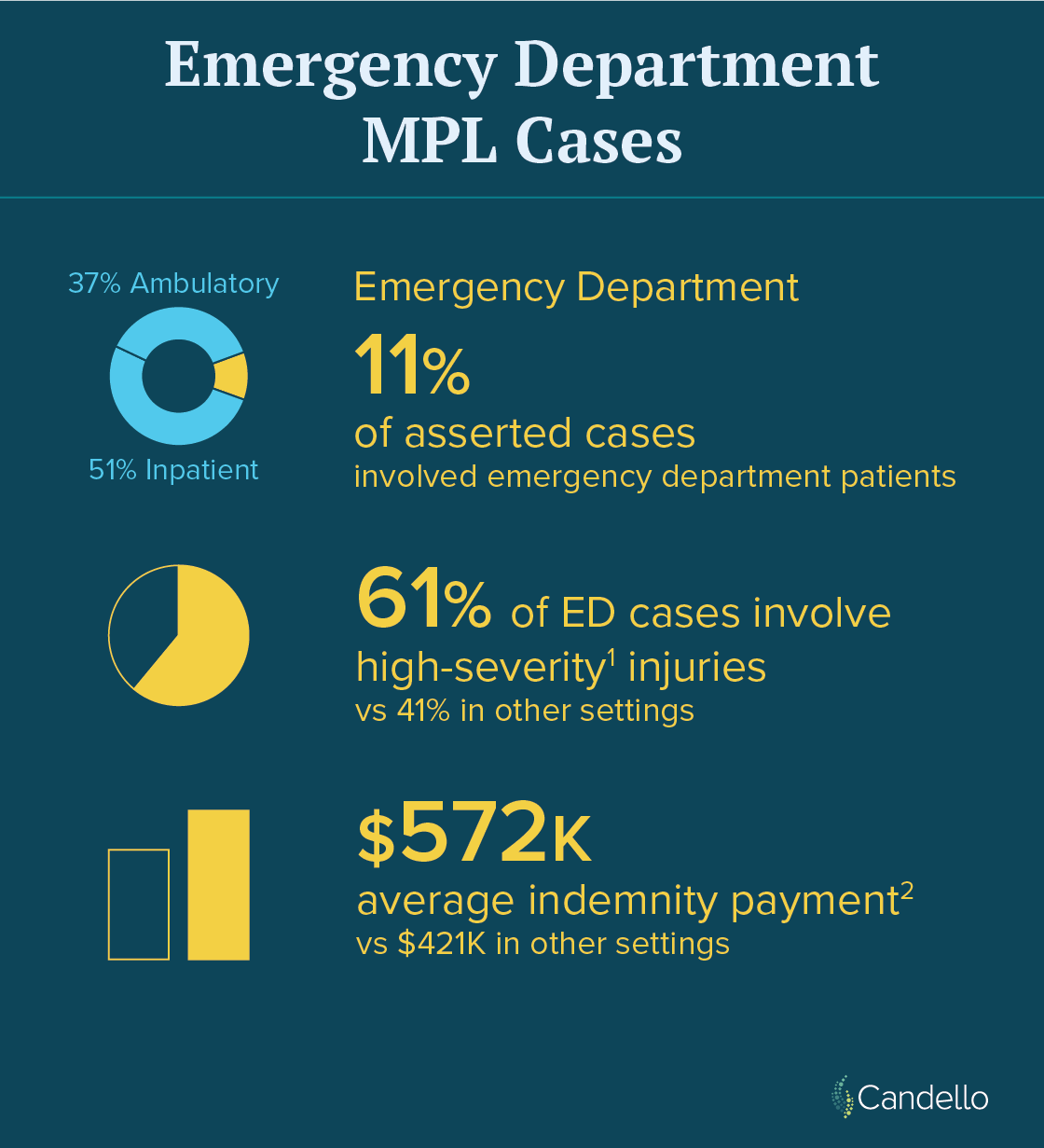Newsletter
ED Malpractice Cases Aren’t Necessarily Dramatic
Jun 02, 2023
Anyone who has watched much American television knows that a hospital emergency department (ED) is filled with “crisis mode” scenes of traumatically injured patients (usually) being saved within 59 minutes of the opening credits. Anyone who has been a patient or provider in an American ED might wish to quibble with those depictions.
According to the National Center for Health Care Statistics, there were 131 million ED visits, or 40 for every 100 Americans, in 2020. More than two-thirds (71%) of those ED visits were for reasons other than injury. In addition to the sheer volume of visits is the evolution of EDs from primarily a trauma or urgent care facility to a catchall for patients with fewer options for non-urgent or non-injury-related care.
Likewise, the patient safety challenges that real Emergency Medicine providers face are quite different from their Hollywood counterparts. According to the Candello database, Emergency Medicine-related medical professional liability (MPL) cases, which account for roughly 10% of all MPL cases, tend to involve more severe patient harm and have higher indemnity payments than MPL cases from other care settings. But, for the most part, ED cases are more likely to stem from patients in slowly evolving scenarios than from the urgent treatment of victims of accidents or violence.


What the Candello data indicate is that, while today’s EDs are dealing with an ever-increasing volume of patients with a broadening array of “emergencies,” they are not becoming dramatically riskier from a patient-safety perspective. Of course, ED leadership needs to continue to pay attention to the patient care issues that continue to be flagged in the analysis of MPL claims and suits, but at least one aspect of their job is not in crisis mode.
Recent Issues

Getting to the Detail Devils

The Diagnostic Multiverse


